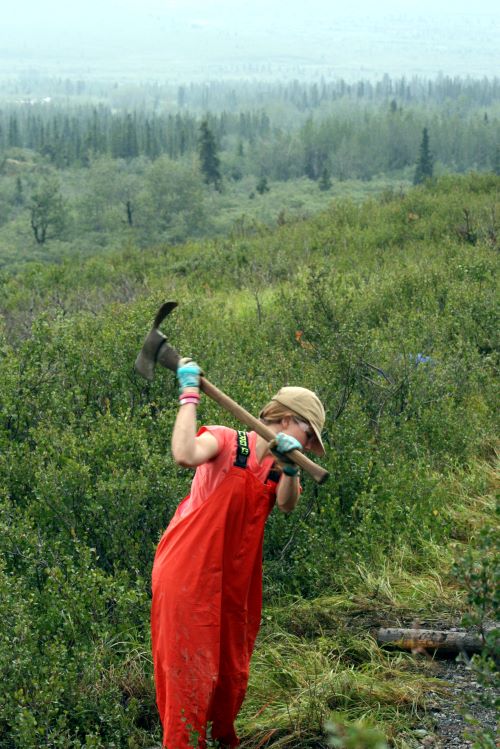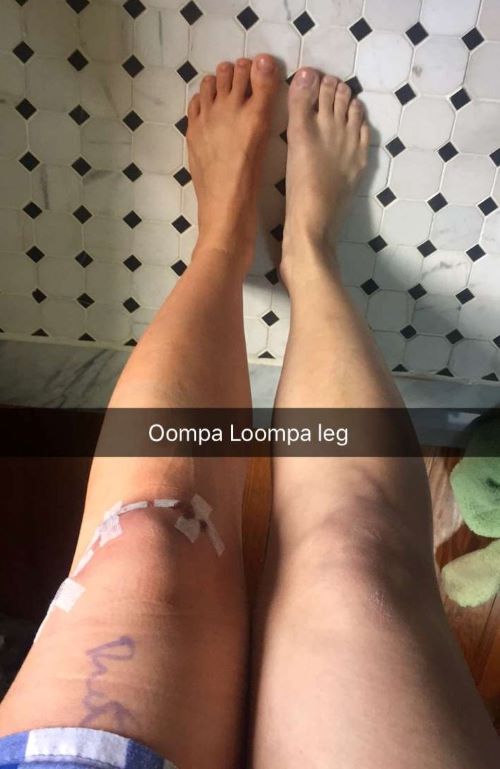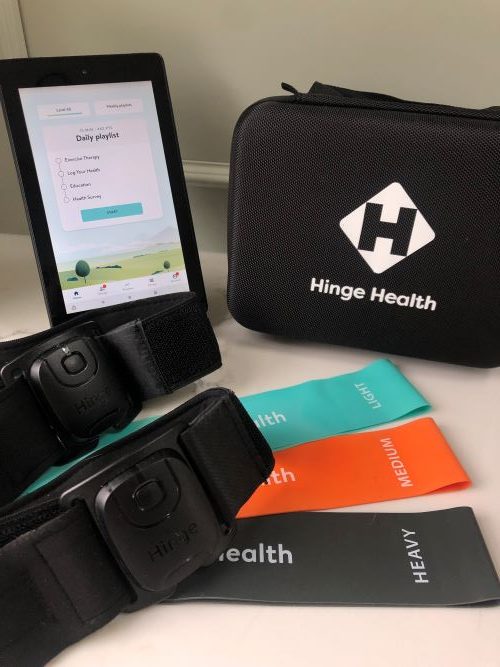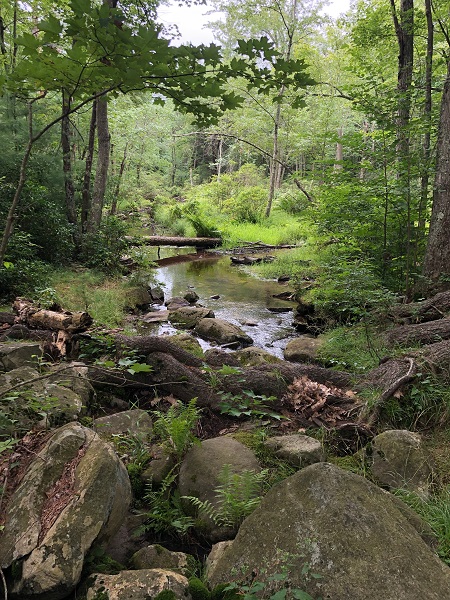Getting Back to Outdoor Activities with Chronic Knee Pain

The reason I started this blog was to share the wonder I experience in nature with others (not to talk about recycling, despite most of my prior posts). I wanted to share the joy and magic I find in nature and inspire others to connect with the outdoors.
But writing about journeying in nature wouldn’t be complete without sharing my concurrent journey with chronic pain. I’ve felt defined – and confined – by chronic knee pain for much of the last 7 years.
Recently I’ve made significant progress managing the pain, and I hope my story can help others struggling to get back to activities they loved doing.
From chronic overuse to chronic pain
I’ve bounced between overuse injuries for most of my teenage and adult life: a stress fracture in my tibia during high school cross country, chronic exertional compartment syndrome in my lower legs and bursitis in my shoulders in college, and patellar tendonitis in my early twenties. I seemed to be more prone to problem joints than the average young person. I changed sports to avoid discomfort, switching from running to cycling when my knee started to become a persistent issue.
Soon after, I discovered hiking and backpacking. I’d always played by the creek in my neighborhood growing up but transitioned to traditional sports which was more socially acceptable in high school. Finding that these were legitimate adult hobbies, I was elated to be back in the woods again. I couldn’t afford the lightest gear, and didn’t have the forethought to see that strapping on a 30+ pound pack for a weekend without preparing my body for the extra weight would become a problem because I was young and relatively in shape.

My knee started to let me know something was wrong when I traveled to Denali National Park, Alaska for a volunteer vacation with the American Hiking Society to perform trail maintenance. The park is designated wilderness, so most of the activities are done by hand versus power tools. We cut down trees blocking the path using a two-man saw instead of a chainsaw.
In order to shore up parts of the trail from erosion, we needed to bring in rocks to the trail site but they couldn’t be delivered by vehicle. Instead, we strapped on external frame backpacks with attached buckets, hiked down to the nearest river bed, filled the buckets as heavy as we could tolerate, and hiked back uphill to our trail section. Several days of trail maintenance activities really started to wear on my knees.
Returning home, I continued to backpack without properly training during the week. Nursing a sore knee, I bailed on a 28-mile backpacking trip in favor of a shorter 21-mile day hike. Not my smartest moment. Left knee said Enough! and swelled so bad I had trouble sleeping that night.
I went to the doctor, got a prescription for physical therapy, and was on the road to recovery. I didn’t, however, take the therapist seriously when she said I needed to do my exercises every day. Nevertheless, I graduated from PT, eager to resume 10+ mile day hikes and get out backpacking.

Patellar tendonitis morphed into patellofemoral pain syndrome as the pain traveled to underneath my kneecap. For several years I bounced between hiking, physical therapy, and doctor visits in and out of pain. I tried cortisone, hyaluronic acid injections, dry needling, massage, you name it.
Eventually the pain became great enough that I had to stop hiking altogether. Simple activities like going up and especially down stairs became painful. At this point, while I was in my mid-twenties, I resorted to going down stairs backwards, one foot at a time.
I underwent arthroscopic surgery looking for something that was wrong with my knee. While they found degraded cartilage (chondromalacia), there was nothing that they could shave, cut, or repair.
I spent a lot of time resting, icing, and sitting on the couch nursing my knee and injured pride. I resolved to get another surgery to fix this once and for all. My surgeon recommended realigning my kneecap so it would track better and not irritate the cartilage underneath. This was major surgery. He had successes with previous patients, but the results were not guaranteed.
As I was considering invasive surgery, my patient husband – who had watched me bounce from doctor to doctor – asked me to really try to follow the PT’s recommendations: do the exercises as prescribed every single day before permanently altering my body. It was this plea that started me on a breakthrough with my chronic pain.
I went to a new PT who had just graduated from his program. When I started, normal household activities were difficult. Squatting, running, and jumping were out of the question. In one of our first sessions he asked me to squat while leaning against a wall to lessen the weight on my knees. I attempted and shook my head, “I can’t do it. It hurts too much.”
He watched me quietly and then gently explained, “I think it’s your brain telling you this is going to hurt. It’s not pain from performing the movement because you’ve barely moved.” He explained that the movements may be uncomfortable at first but were necessary to strengthen muscles that had atrophied – there was no way around this.
Understanding chronic pain
After that session, I received a PT newsletter about current research into chronic pain. The article explained that just because you feel pain doesn’t mean you are damaging your joint. Research has shown that pain is produced by the brain, not by the tissues, in order to protect us from getting hurt. As we move less due to pain, nerves can over-sensitize, making simple movements that are not damaging become painful. The article linked to an entertaining talk by Lorimer Moseley, an Australian pain scientist. I highly recommend watching the videos of his talks below if you are suffering from chronic pain.
I was stuck in a negative-feedback pain loop and the only way out of this was the very thing causing my pain in the first place: movement is required to retrain the brain. Controlled exercises are not dangerous and, therefore, don’t have to be painful. Moving strengthens muscles and supports joints, further reducing pain.
Through the guidance of this therapist, I eventually regained the ability to walk, hike, and even squat to parallel – something I had not been able to do for most of my adult life. I was elated. My PT instructed me that once I “graduated,” I would have to maintain my exercises a few times a week to keep the muscle imbalances from returning.
Despite experiencing my first success overcoming chronic pain through consistent work and pain re-education, the results didn’t last. I resumed normal life, and gradually fell off of the maintenance PT wagon. Pain slowly returned, and I started to once again dread stairs.
About a year later, I happened to receive a mailer from my insurance company advertising a free benefit called Hinge Health. COVID-19 had turned the world upside down and in-person appointments with therapists were limited. I decided to give it a shot – if it was free, what did I have to lose?
I received a kit in the mail with sensors to wear around my thigh and shin for tracking my exercise form, 3 resistance bands, and a Kindle tablet with the Hinge Health app loaded on it. In the app, gentle, short exercise routines are programmed for you in 40 levels. You acquire points for each time you complete an exercise session, and eventually you earn enough points to move up one level.

They assign you a health coach who helps you set goals and keeps you accountable for using the program. Each exercise session is coupled with an informational article on the latest pain science to help users understand the reason behind their pain.
The program teaches you that “motion is lotion” and that controlled, gentle movement is necessary to retrain your brain. Chronic pain, while a real sensation, is a product of your brain, past experiences, emotions, and stress levels, not direct tissue damage.
Receiving this free benefit was instrumental in my progress with chronic pain. The novelty of the program and accountability from my coach helped me make PT exercises a habit. I gradually added more difficult exercises. After a few months I reached a new milestone: I could complete an “ass-to-grass” squat for the first time in my adult life. I even started working out at my husband’s CrossFit gym in the summer of 2021, and started squatting, deadlifting, and rowing. I was SO ready to return to backpacking.
Progress is not linear; just keep moving

The taste of freedom after 6 years of feeling imprisoned by my body was sweeter than my favorite dessert (chocolate cake with vanilla icing). I cruised through the first 5 miles to my campsite, not seeing a soul.
I spent the night cuddled with my dog, half awake – I had forgotten how spooky the woods can be by yourself once the sun goes down. I was sleep-deprived but elated. After all this time, I was finally backpacking (even solo!).
I felt strong, and wanting to beat the incoming weather, picked up the pace for the 5-mile hike out. Just over a mile from the car, I crossed a rocky drainage. I thought to myself, I feel so strong hopping between these boulders!
My momentary lapse of attention got the better of me: I slipped and felt something snap in my right ankle and it quickly ballooned in size. I limped back to the car and realized in dismay that I had damaged my “good” leg. In two months we had reservations to backpack the Hoh River Trail in Olympic National Park. I was afraid I would have to cancel. Sidelined yet again.
I called my PT and she went into hypercare. Because I was consistent with my knee and hip exercises, I was able to recover quickly from the sprain and resume an activity I hadn’t done in 6 years – jumping. I completed my rehab just in time to backpack over 40 miles in Olympic with minimal knee and ankle pain. Catapulted into a new sphere of being, I was UNSTOPPABLE…
Until, I wasn’t. I discovered I loved rowing – a lot. Getting in a hard cardio workout was previously impossible when I had knee pain. Now, crushing a rowing workout felt amazing. Everywhere but my patellar tendon. Soon walking a half-mile elicited symptoms. Heeding my body’s signals (for once) and realizing that I was on the verge of creating another overuse injury, I stopped most activities. The pain in the tendon subsided, but as I moved less, the familiar pain behind my kneecap returned.
I entered a third phase of chronic knee pain over the winter. Getting outside on foot was out of the question, but I was still able to enjoy some of the season by car. Frustrated and feeling totally overwhelmed, I asked my doctor to test me for anything that would cause me to have these chronic, recurring injuries. Do I have a problem with my thyroid? An auto-immune disorder? Eventually, the diagnosis was chronic over-zealousness, which the doc assured me is easier to treat than the alternative.
I began to re-read the pain science articles in the Hinge Health app. Starting back at level 1, I performed only the most basic of therapy exercises to retrain my pain sensitivity. I began hiking again at a frustratingly small distance – a quarter mile – on a dead flat trail a couple of times a week. If I did not feel pain during or 24 hours after the hike, I repeated that distance. Each week I tried to go a few tenths of a mile farther, carefully monitoring my symptoms and making sure to turn back before my knee started to ache.
I also found a new physical therapist who specializes in movement dynamics. She identified dysfunctional movement patterns that were caused by being in pain and that perpetuated the pain cycle. She’s helping me activate dormant muscles and sequence them correctly when I move to support my joints.
Over the spring I was able to return to backpacking doing short overnights, requiring only a 2-3 mile flat hike in. One of my best girl friends offered to carry most of my stuff to alleviate the stress on my knee. I’m now up to about 5 miles carrying a pack with companions schlepping some of my stuff, but I’m tasting freedom again.
I’ve resumed lifting, rowing, and biking at the gym (all in moderation). I still don’t feel ready to run or perform jumping movements, and some days I still feel knee pain. But I’ve learned I just have to be patient with myself. I need to take it slow, maybe slower than most people my age, but I still need to move.
Movement, after all, is medicine.
Have you suffered from chronic pain? What has worked for you to return to your favorite activities? Let me know in the comments.
Note: I am offering my unsolicited opinion of the Hinge Health program – I am not compensated for this writing. I do recommend it but ONLY if you’ve seen a doctor and physical therapist in person for your chronic pain. I was familiar with the proper form for the exercises and the intent behind them (which muscles I should feel activating) thanks to prior therapy sessions. I do not believe digital health is a substitute for in-person evaluation to identify your specific movement patterns/imbalances and provide exercise instruction/form coaching. However, it was a useful adjunct for me in making progress during the height of the pandemic. The pain education it provides is invaluable.
